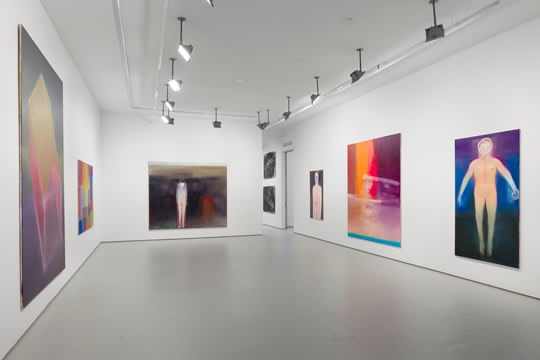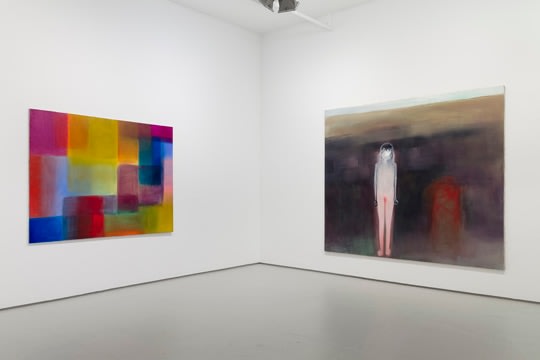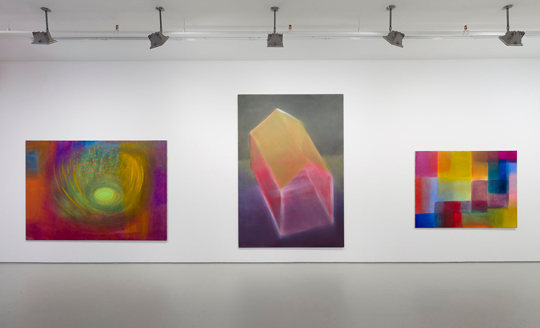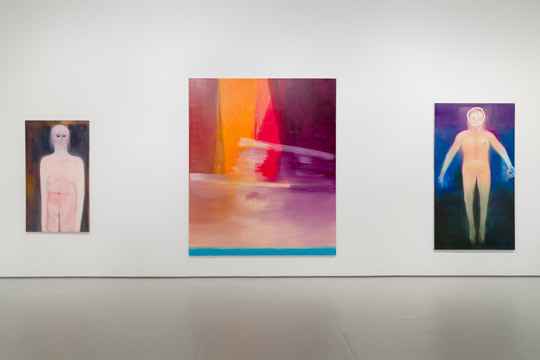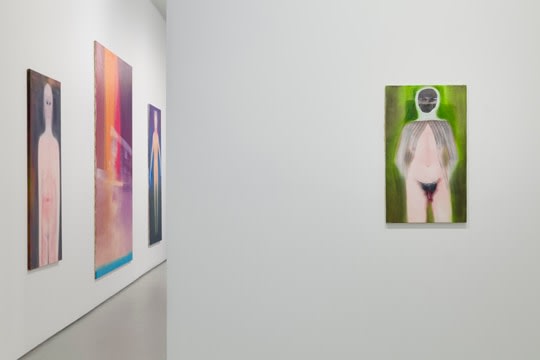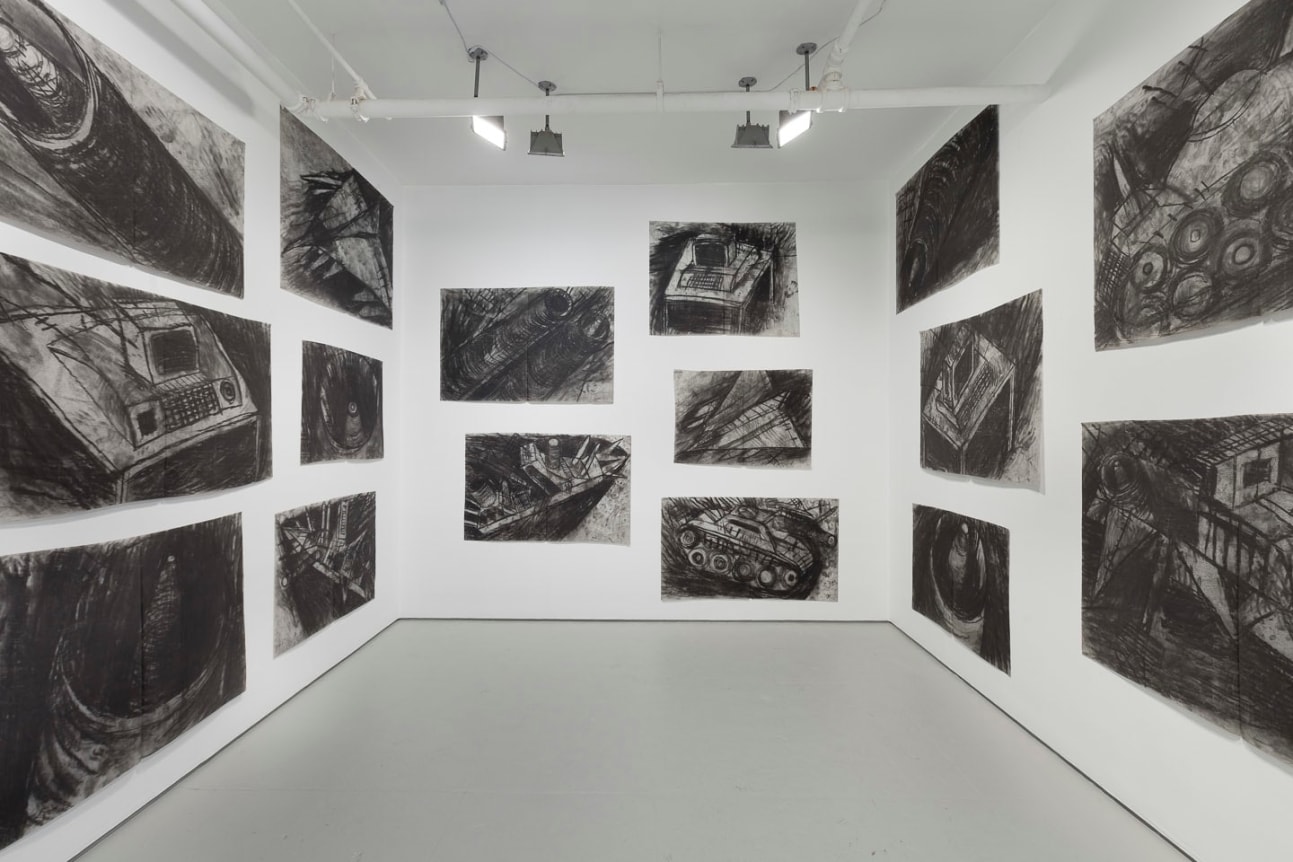FOR IMMEDIATE RELEASE
Miriam Cahn
November 2nd, 2013-January 11th, 2014
Opening reception for the artist:
Saturday November 2nd from 5PM-7PM
“The figures represent themselves. Everything else is interpretation.” –Miriam Cahn
The gallery is pleased to present recent paintings with a pivotal series of drawings produced in 1983 by Miriam Cahn (b. 1949) the new recipient of the 2013 Basler Kunstpreis Award.
Miriam Cahn emerged into the European political and cultural scene in the early 1970s from her hometown of Basel, Switzerland. Cahn enacted private performances and drawings that merged notions of gender, the body, endurance, and public dissent. Politically active, Cahn joined the women’s movement in Switzerland, working performatively and making drawings on the streets and highway underpasses of Basel where she was discovered by Jean-Christophe Ammann. She joined Galerie STAMPA, which at the time was as much a political affiliation as a gallery that was a hub for socially conscious innovations.
Cahn developed her work in the 1980s incorporating extremely large, black and rich drawings of warships, televisions, fighter jets and other seemingly male-dominated vernacular, that immediately engaged in discourse with Anselm Kiefer, Basquiat, Clemente and Immendorf, among others. She came to international prominence with three successive and unprecedented opportunities: an inclusion in Documenta 7 in 1982 (in which she removed her work out of protest), a solo show at Kunsthalle Basel, curated by director Jean-Christophe Ammann in 1983, and a solo presentation at the 41st Venice Biennale in 1984 representing her country of Switzerland. Decades later at age 50, Cahn made another radical move in her practice. She decided to leave the monumental drawings in which she became known, for an equally intuitive painting practice—a direct evolution and innovation of the result of 30 years of drawing and performing. Over the last 15 years Cahn’s extraordinary range and iconography have been supported by the emotive potential of painting.
Monumental in scale, each work in this exhibition focuses on thematic and critical subjects that have been present in Cahn’s work for over four decades. The body, human conflict, home, war, nature and landscape, both real and imagined are frequent themes. These archetypes serve as the core symbolic language for Cahn’s social critique, incorporating topics of world events, cycles and transformations in this extraordinary selection of work that parallels the 80s and the present.
The second gallery exhibits for the first time since its inception one of Cahn’s famous room installations from 1983 which has been installed by the artist. Entitled feld fu ür waffenversuche (beirut-beirut), this work was a reaction to events of the Lebanon War. The Israeli-Palestinian conflict and subsequent Beirut occupation was a central reference for her war room installations of the period. The drawings have an immediate and dynamically performative approach, images of tanks, nuclear warheads and early computers hum with electricity, power and tension that are central to Cahn’s socially conscious drawing practice.
Beirut Beirut is significant to the artist’s evolution in the early 80s from an emerging Swiss artist to a rare female international figure in the newly emergent multinational art scene. Cahn remarks that upon completion of this specific drawing, she shifted to signing her own work more completely, from a genderless “M.” to “Cahn”. This is significant in a number of respects, namely in the claiming of artistic identity but also in identification of her Jewish ancestry vis-a-vis the subject of Israel in feld für waffenversuche (beirut-beirut).
Another notable circumstance is that this major work was produced soon after her controversial withdrawal from Documenta 7 in 1982. Cahn installed her large-scale works in a devoted gallery in Kassel amid curatorial politics at the museum, which resulted in late stage additions from the power male scene to the program. She was asked to remove part of her installation as a result, with the specific request that the images of women be withdrawn that resulted in Cahn’s decision. Subsequently Miriam was criticized heavily by the press core and was confronted by male and female artists in the exhibition who were critical of her decision.
The following year, Cahn was awarded a first major international exhibition in which …Beirut-Beirut was prominently featured at Kunsthalle Basel in 1983. Miriam Cahn was the first woman to have a solo show at this important Swiss Institution. Strong in feminist and political content, her first major solo museum exhibition was debated internationally.
By considering the personal, professional, social and transformative impact of the politics of the time, Cahn was able to coordinate this iconography in a strong statement that coincided with her personal and public trajectory. Similarly, in 2013, with a new chapter of public recognition underway in the United States and Europe, a cycle of political tensions and conflicts in the Middle East renews the opportunity for newfound reflections that have developed in the last four decades politically and in terms of her work’s relationship with the public. This exhibition links this major drawing installation and new works in painting for the first time, yielding interpretations and intuitions of the parallel words of the private self, the public, and the broader body politic.
Cahn has influenced an international group of artists of successive generations who have been inspired by the integrity of her life and her practice. Elizabeth Dee Gallery debuted her first solo exhibition in the United States in 2011. Her work to this day still remains under the radar in this country. Previously in the United States, Cahn participated in one exhibition: An International Survey of Recent Painting and Sculpture at MoMA, New York in 1984. Her work was acquired into the collection in 1984 and again in 2011. In recent years, Cahn has reached a newfound recognition for her work and contributions. Miriam Cahn will have a number of notable exhibitions in 2014-2016 that include her first US retrospectives organized by Philipp Kaiser at Santa Monica Museum of Art, and the Broad Art Museum, co-organized by Alison Gass and Michael Rush. A solo show at Centre culturel suisse, Paris will be held next year. Monographs will be published on the occasion of these exhibitions. Miriam Cahn is the new 2013 Basler Kunstpreis Award recipient, as well as recipient of Prix Meret Oppenheim Award in 2005.
Please note that Miriam Cahn will be in conversation with Ulrike Müller and Piper Marshall on Saturday, November 2nd at 12:30 at the Swiss Institute, New York as part of the exhibition Descartes’ Daughter. Please visit www.swissinstitute.net for further information.

